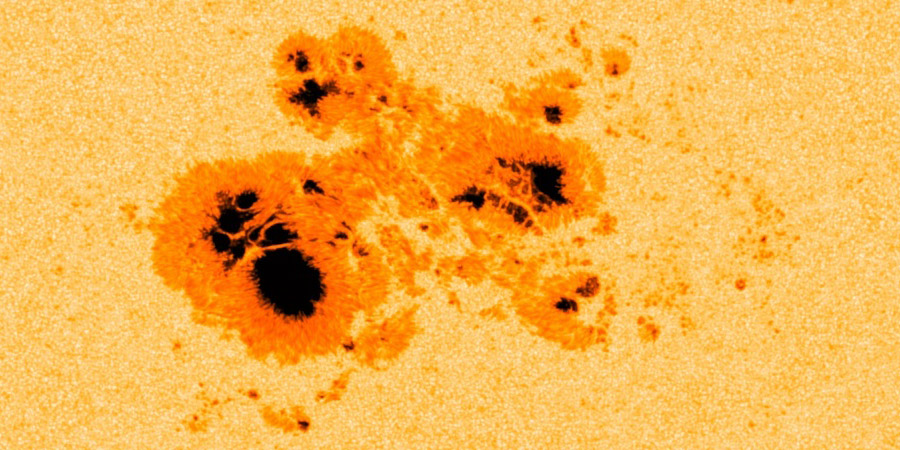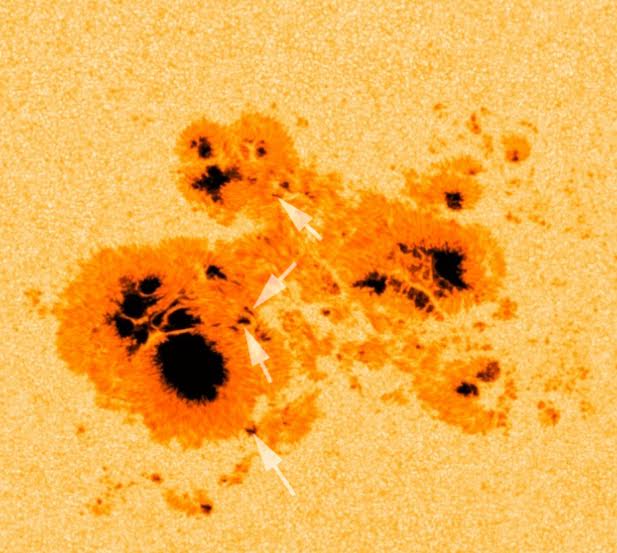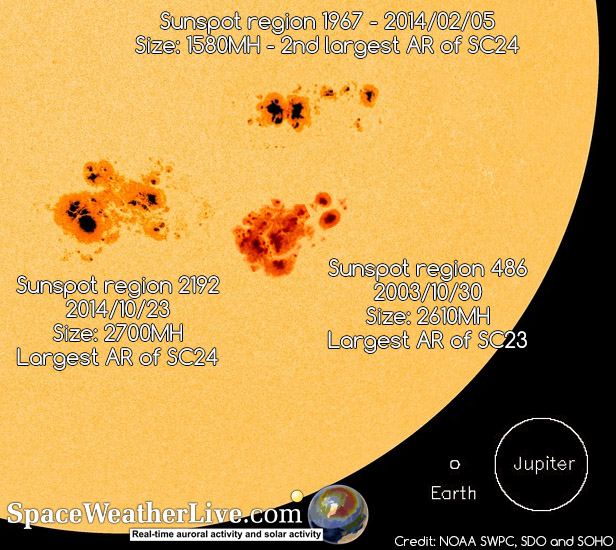Gentle giant sunspot region 2192
Thursday, 23 October 2014 16:24 UTC

Sunspot region 2192 has grown today to a size of 2700 millionths of a solar hemisphere making it the largest sunspot region in almost 24 years. Sunspot region 2192 is now even larger than sunspot region 486, which was the source of several strong solar flares almost exactly 11 years ago. Sunspot region 2192 has however been relatively quiet since the X1.6 solar flare (no associated coronal mass ejection) that occurred yesterday. There has been only one M-class flare today: M1.1 at 09:50 UTC. Why is it so quiet? In this article we will take a look at sunspot region 2192 and compare it with two other famous sunspot regions.
Evolution of sunspot region 2192
Sunspot region 2192 is now at the center of the earth-facing solar disk and remains very big but the best seems to be over with some decay in it's trailing section and loss of penumbral area in the central penumbral crumble. Several other spots also shrunk in size over the past few hours. Nontheless, it is now the largest sunspot region in 24 years.
As of last night two new delta spots emerged just west of the leading spot, these two tiny delta structures are still there and are stable. One other new tiny delta spot is seen south of the leading spot.
Due to the slight decay of this region, sunspot region 2192 has been a bit more quiet but it still has the capabilities for further M-class events and a slight hances for another X-class event in the coming 24 hours.

All the other sunspot regions on the disk are unremarkable. Any future solar flares will very likely be centered around sunspot region 2192 which is now directly facing Earth.
Images: NASA SDO.
Solar flare odds for the coming 24 hours
M-class flare probability: 60% chance
X-class flare probability: 10% chance
Large sunspot regions compared
Sunspot region 2192 is large, but how large exactly? We made a special image combining SDO and SOHO imagery showing three large sunspot regions: sunspot region 486 from October 2003 which was the largest sunspot region of solar cycle 23. Sunspot region 1967 from January 2014 which is now the second largest sunspot region of the current solar cycle and of course sunspot region 2192 from today which is the largest sunspot region in almost 24 years time. We also added a scale to show you how big these sunspot regions are when you compare them with planet Earth and Jupiter.

Thank you for reading this article! Did you have any trouble with the technical terms used in this article? Our help section is the place to be where you can find in-depth articles, a FAQ and a list with common abbreviations. Still puzzled? Just post on our forum where we will help you the best we can!
Latest news
Latest forum messages
Support SpaceWeatherLive.com!
A lot of people come to SpaceWeatherLive to follow the Sun's activity or if there is aurora to be seen, but with more traffic comes higher server costs. Consider a donation if you enjoy SpaceWeatherLive so we can keep the website online!

Space weather facts
| Last X-flare | 2025/01/04 | X1.85 |
| Last M-flare | 2025/01/22 | M1.3 |
| Last geomagnetic storm | 2025/01/04 | Kp5 (G1) |
| Spotless days | |
|---|---|
| Last spotless day | 2022/06/08 |
| Monthly mean Sunspot Number | |
|---|---|
| December 2024 | 154.5 +2 |
| January 2025 | 145.2 -9.3 |
| Last 30 days | 162 +43.1 |


